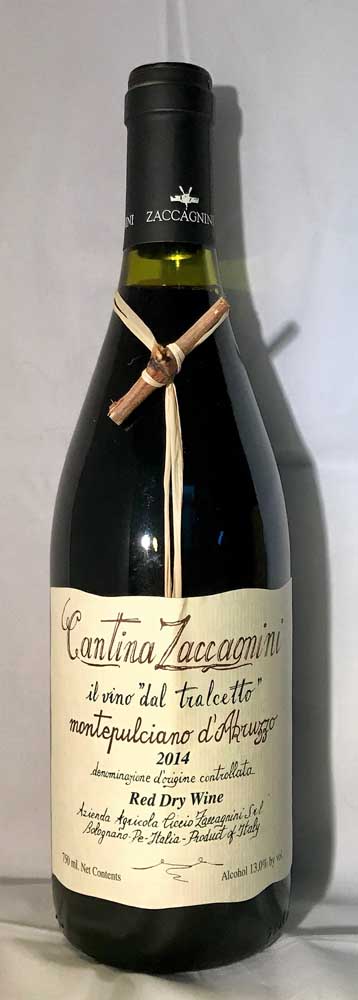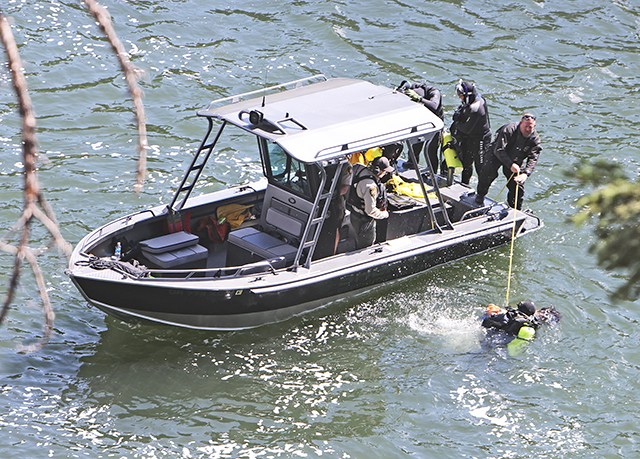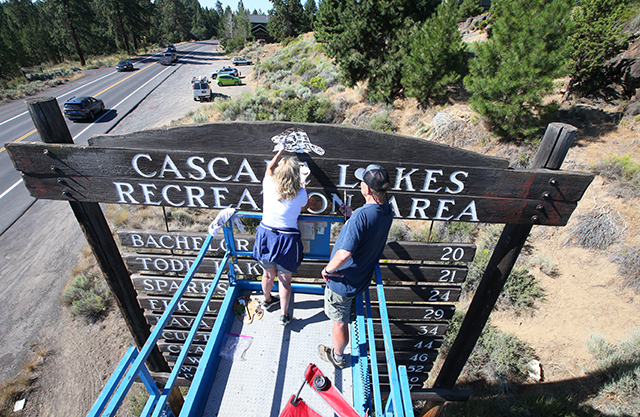Italy’s brilliant reds
Published 11:56 am Thursday, July 20, 2017

- Cantina Zaccagnini’s 2014 “dal Tralcetto” Montepulciano d’Abruzzo ($13.99) is grown in the Abruzzo region on Italy’s Adriatic coast. (Submitted photo)
Many international wine connoisseurs consider Italian reds to be among the best in the world — the equal, if not the superior, of French and California varietals.
“I don’t think there’s a better wine grape in the world than Nebbiolo, especially with food,” said Bend’s Ron Lybeck, a former New York sommelier employed at the Ariana Restaurant.
Trending
Nebbiolo is only one of many Italian varietals readily available in American markets. Among others, Sangiovese, Valpolicella, Montepulciano, Barbera, Primitivo and Dolcetto may be found in better wine shops and on the wine lists of many fine-dining restaurants.
Chianti, undoubtedly the best-known Italian wine in North America, is made from the Sangiovese grape, as are numerous other Tuscan wines. A generation ago, Chianti — which has been around in name since the 13th century — might have been best recognized in a fat bottle wrapped in a straw basket with a candle dripping wax upon its neck.
It is mainly found in standard bottles, often as Chianti Classico (from south of Florence) or Chianti Rufina (from east of Florence). Aged more than three years, it may be labeled Chianti Riserva. The traditional recipe (70 percent Sangiovese, blended with little-known red Canaiolo and white Malvasia Bianca) was created in the mid-1800s by Baron Bettino Ricasoli, a wine estate owner who later served as Italy’s prime minister.
One of several choices available locally: 2014 Querceto Chianti Classico ($14.69).
Piedmont selections
Nebbiolo means “little fog,” a reference to the heavy autumn mist that blankets much of northwestern Italy’s Piedmont region during the harvest season. Medium- to full-bodied and highly tannic, light red in color, mature Nebbiolo wines carry herbal flavors of violet, cherry, raspberry and prunes, as well as tobacco. Along with Barbera, the grapes are the most commonly planted in Piedmont.
Trending
Most famous of the Nebbiolo wines are Barolo and Barbaresco, produced mainly in the province of Cuneo on the slopes of the Alps, along the French border. Barolo, which may require aging of five years or much longer to balance its tannins, is a deep, dark full-bodied wine with a complex profile. Barbaresco is somewhat lighter but still elegant. Subtle variations reflecting microclimates and soil variations are displayed in a range of flavors that include berries, licorice, rose petals, truffles and tar.
Available locally: 2013 Podere Ruggeri Corsini Nebbiolo ($14.99); 2012 Vietti Castiglione Barolo ($54.99).
Like the French, Italians take great pride in their cuisine; thus wines were developed regionally according to the food with which they were being paired. “I tend to think of European wines as having an indigenous, regional quality,” Lybeck said.
For Nebbiolos, especially younger Barolos and Barbarescos, that means grilled and braised meats, mushroom risottos and mild cheeses. Wines with more aging, and thus silkier textures, are outstanding with wild bird.
A counterpart to Nebbiolo is Aglianico, produced in the southern Italian provinces of Campania and Basilicata, at the foot of the Apennines near Naples. Neither floral nor fruity, this red has a balanced earthiness.
Multiple choices
A staple of trattorias throughout Italy is Montepulciano d’Abruzzo. “That’s with good reason,” Lybeck said. “It goes great with a lot of things.” Grown mainly on the Adriatic slopes of the Apennines east of Rome, it is a deep-purple wine with juicy plum flavors and soft tannins. Available locally is 2014 Il Vino dal Tralcetto (“small-bunch wine”) from Cantina Zaccagnini ($14.99).
Also widely available is Valpolicella, from the Verona region below the Dolomite Range in northeastern Italy. Gentler than Chianti, with a dark-cherry flavor and good spiciness, it goes well with meats, cheeses and fuller-bodied poultry and fish. One choice available locally is 2014 Allegrini Valpolicella ($17.99).
Sangiovese is the favorite wine of southern Italy, and it is the Italian grape most frequently planted outside of Europe, including Washington’s Yakima Valley. Notable for strawberry flavors in its youth, this light- to medium-bodied wine adds oak and cherry flavors with aging. Lybeck recommends it with roasted meats, tomato and cheese sauces. Available locally: 2015 Tenuta Sassoregale Sangiovese ($13.99).
Brunello di Montalcino is a richer, deeper version of Sangiovese produced near the Tuscan hill town of Siena. Aged four to five years, including two years in oak, the garnet-colored wine has a nose rich in berries, with underlying vanilla and spice, and earthiness on the palate. Available locally: 2011 Castello Banfi Brunello di Montalcino ($79.99).
Since the 1970s, Sangiovese has been added to French Bordeaux varietals (Merlot, Cabernet Sauvignon and Cabernet Franc) and Rhône wines (such as Syrah) to create a new blend known as Super Tuscan wine. Typically aged in barrels of French oak, Super Tuscans are high-alcohol, fruit-forward wines designed for the international market. They are not typical of traditional Italian reds.
“The best Italian reds are rustic country wines,” Lybeck said. “They’re good with food. Country people have been drinking them for generations.”
— John Gottberg Anderson can be reached at janderson@bendbulletin.com.







